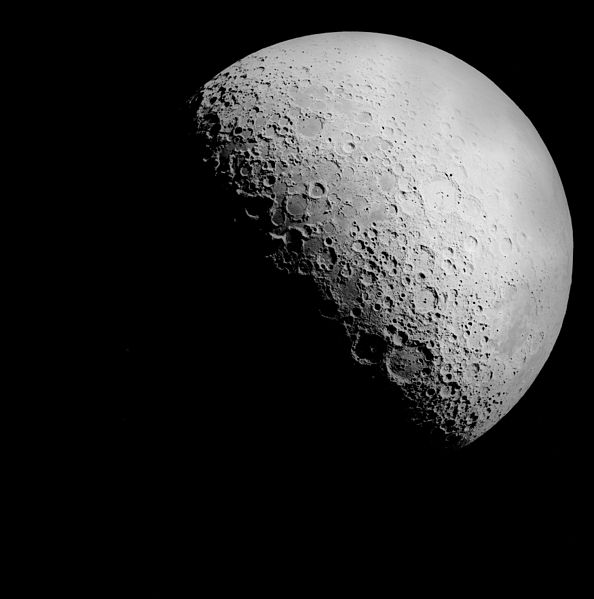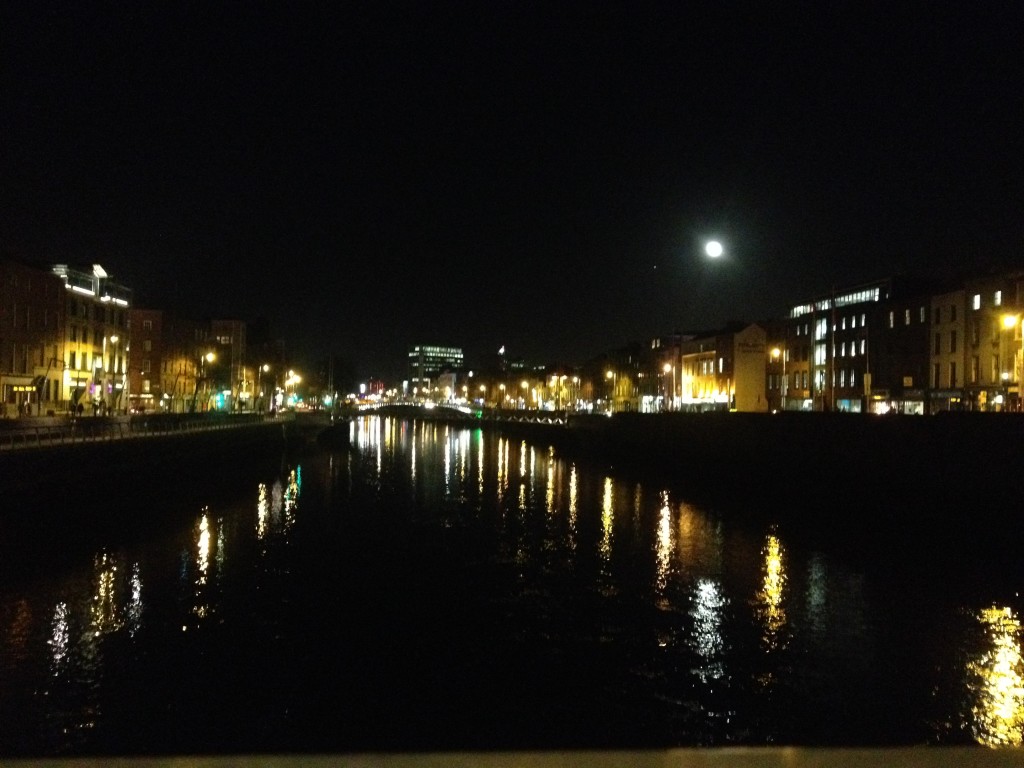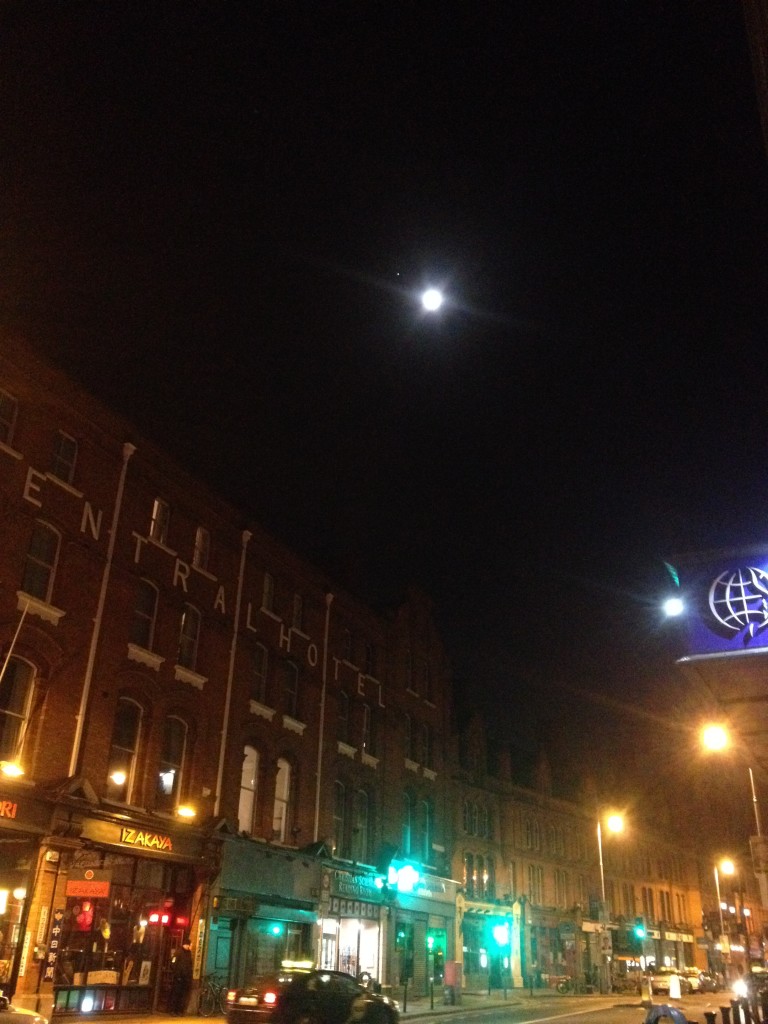By Sean Fagan.

The eerie, lifeless satellite of earth, the moon, can be used as a navigational aid (Photo: Wikimedia Commons).
.
Finding your Way by the Silver Light of the Moon
.
As a navigational aid the moon can be somewhat inaccurate.
In the words of natural navigator and writer, Tristan Gooley - "The moon is a fascinating and sometimes slippery object for the natural navigator to tame. There are fast and slow methods for finding direction naturally using the moon, but unfortunately no known fast accurate methods" (reference link at end of article).
So, is there any other moon information that can be used to complement standard moon-navigation methods for greater accuracy?
There certainly is.
.
Moon-Rise, Moon-Set & Lunar Noon
.
When I'm planning to do some night navigation when the moon is visible, I like to get the compass bearings of where the moon will rise and set.
That way when I'm navigating and I happen to see, for example, the moon rising - I know what compass bearing it's at - without looking at my compass. The same for moon-set.
I also like to get the time of when the moon will rise and set.
So, without looking at either my watch or compass, when I see the moon rising I know what time it is and what compass bearing the moon is rising from.
Aside from the time and bearing of moon-rise and moon-set, I also like to take note of when the moon will hit meridian (lunar noon - its highest point in the sky) because that will give me an accurate indication of south (180 ° degrees).
.
In effect I have 3 accurate indicators of time and compass bearings based on certain stages of the moon's travels through the sky - 1) Time & compass bearing of moon-rise 2) Time & compass bearing of lunar noon 3) Time & compass bearing of moon-set.
A compelling reason why knowing when the moon will rise, set and reach lunar noon is that it gives the navigator a sense of where the moon should be throughout the night.
The moon can then be used as a supplementary direction-finder - along with other reliable, celestial cues such as the North Star (Polaris), Orion and the more frequently visible planets, such as Venus and Jupiter.
.
When combined with good map & compass skills - natural navigation cues like the moon become all the more reliable for navigation.
.

An easterly moon (with Jupiter just left of moon) over the river Liffey, Dublin, Ireland (Photo: Sean Fagan).
.
An Example...On February, 24th, 2016 - Dublin city, I took the above photo of the moon at 8pm, just an hour after moon-rise (moon-rise time was 7pm for that night).
At 7pm, the moon was rising at a compass bearing of 88° degrees East, so when I saw the moon it had just traveled past East (east being exactly 90° degrees).
The moon follows a similar east to west arc across the sky - like the sun, so when the moon arises from its easterly bearing it slowly begins to ascend to its southern, lunar noon position in the sky then slowly descends to the western horizon.
.
A southerly moon and Jupiter, Dublin, Ireland (Photo: Sean Fagan).
.
Later that night, I took above photo of the moon at 12.20am, which was 28 minutes before the moon reached lunar noon that night (12.48am).
So when I spotted the moon later at 12.20am it was very close to south (the moon reaches meridian due south - 180° degrees on a compass).
Like the time for moon-rise and moon set, the time of lunar noon for each night is variable.
In summary, I take the following moon information to supplement the more standard natural navigation cues of the moon...
- Time & Compass Bearing of Moon-Rise
- Time & Compass Bearing of Moon-Set
- Time of Lunar Noon
.
It's not a lot of additional information..
Using February, 24th, 2016 as an example....
Time Compass Bearing Time of Moon Rise & Bearing: 19:59 - 88° East
Time of Lunar Noon: 12.48 - 180° South
Time of Moon Set & Bearing: 07:59 - 275° West
.
Of course, the chance of using the above moon-set time of 7: 59am is slim.
Nevertheless, the time of moon-set (and moon-rise) is highly variable, even throughout the course of a week, so there is a good chance that the moon-rise and moon-set times will fall within a reasonable time frame for navigational purposes on most weeks.
Not forgetting that the moon occasionally rises and sets during daylight hours and can be used as a navigational aid during the day.
.
Where do I get my Information about the Moon?
.
Personally, I obtain my moon information from the following website.
The advantage of this website is that any location can be punched in and it will give you all the relevant information.
I like to get a monthly print-out of moon-rise, moon-set and lunar noon times and bearing (along with sun-rise, sun-set & solar noon times & bearing for daytime navigation).
I then place this print-out in a robust, waterproof and transparent plastic cover - such as a map case.
I always tuck away this print-out in a protected place in my rucksack. I don't always use it - but when I do, I'm always glad I brought it.
Of course, many GPS devices and smart phones have this information - either via online websites or as an app.
Still, I like to being a hard copy - to counter any potential difficulties with electronic devices.
.
Concluding Thoughts...
.
With consistent practice, natural navigation is fun, accurate and just as importantly - a great way of connecting with the world around us - even in urban areas.
It's also a viable survival skill-set.
The moon is a celestial object we all recognise and occasionally appreciate - it's a very distinctive and beautiful feature of the night sky.
Knowing the moon's navigational value, and better still, navigating by the moon, can encourage a deeper appreciation of the moon.
It can deepen our understanding of our ancestors, both prehistoric and historic, who navigated by the moon (and other celestial markers).
But more than all of the above - navigating by the moon encourages an individual to look at the moon more often.
It's little wonder so many past cultures revered the silent, silver face of the moon.
.
.
"The sky is a beautiful old parchment in which the sun and moon keep their diary"
Alfred Kreymburg
.
.
Related articles on this website:
.
Links:
.
*Check me out on Instagram, Twitter & Facebook for more outdoor-related topics..
..
Quick Navigation Tip:
.
It's always a good idea to check natural navigation cues with a compass.
As an exercise, try estimating the compass bearing of natural-navigation cues by sight - then confirm the accuracy of your calculations with a compass.
Over time, you will acquire far greater accuracy in your calculations and a greater familiarity with your compass.
Another good reason to always carry a compass on your person or in your backpack.

Recent Comments